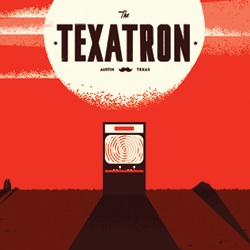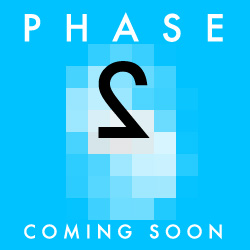VENUS PATROL PRESENTS: THE KENTUCKY ROUTE ZERO GUIDE TO FILM
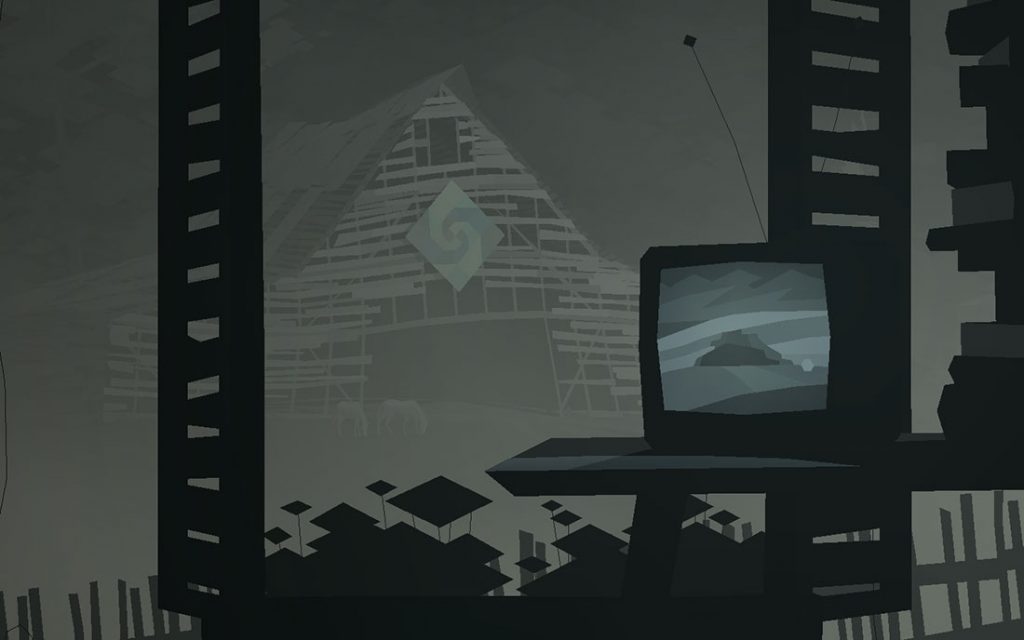
[It’s no secret that I count Kentucky Route Zero as one of my favorite videogames of all time, and one of my highest recommendations particularly for people who haven’t dipped their toes in the videogame waters in a while, and so seeing artist Tamas Kemenczy was a top priority at this year’s Game Developers Conference.
His talk (linked below) was a fantastic account of how theater and film staging influenced the game’s visuals & transitions, made doubly valuable by loops of those pieces playing independently as Kemenczy talked. I was particularly entranced by Burton’s face in Equus, as below, which I didn’t recognize, and snapped a quick photo to have him identify it later.
Having then subsequently watched & been blown away by Equus, I asked Kemenczy to ID all the films in his repertoire of influences, which he’s written up in full after the jump, and to which I’ve added streaming/DVD/Blu-ray links, where available. I hope you find it as valuable a resource as I already have!]
I gave a talk this year at GDC about the scenography of Kentucky Route Zero, the theatrical and cinematic influences on the game, and how we go about designing for performance. Some folks asked about the films shown during the talk, so here’s a list of them, but I thought I’d include some that were on the shortlist but didn’t make it onto slides, and some of these were shown in the KRZ talk the year before as well.
(Not included in this list is David Lynch, who we admire and most people are already familiar with.)

Equus (1977)
I really like the long take of Dysart’s (Richard Burton’s) face, totally stressed out about the chaotic moment that brought about Alan’s personal horse-god. There is a literary connection in KRZ to this play, but also the film by Sidney Lumet has dramatic flourishes that we took to heart.
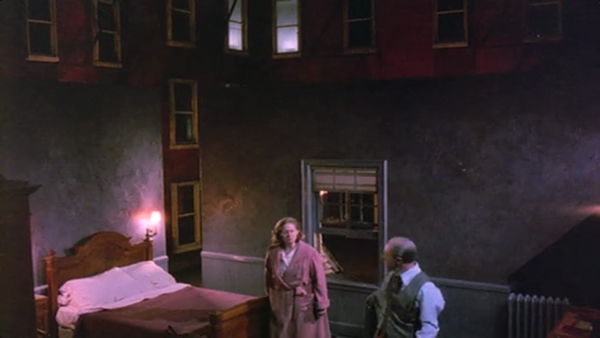
Death of a Salesman (1985)
This is a film version of the classic American tragedy, and it has a set design that we looked at closely. Loman’s home is sliced and fragmented and you can see urban sprawl through the cracks, and it very much reminded us of Beowulf Boritt’s work that blends interiors and exteriors. There are other moments where Loman turns maudlin, and we visit his memories with theatrical light changes, blocking and framing that left an impression on us. It’s a heartbreaking story.
[Available on DVD.]
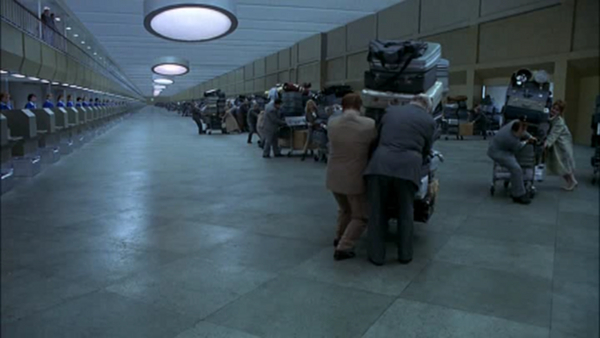
Songs from the Second Floor (2000) /
You, The Living (2007) /
TBD (20XX)
This is an incomplete trilogy that develops a psychological sense of place through simultaneous vignettes instead of a linear narrative. Vignettes as storytelling is important to us in KRZ. It’s a form that isn’t interested in raising one point-of-view over others, instead it’s much more diffuse, echoing themes or a frame of mind, and shows connections between people and places.
There is a tragicomic tone we love in these films- a defendant’s death sentencing is delayed because the judicial committee is being served beer; airport kiosk attendants idly watch an impending tsunami of luggage; an insurance assessment of a destroyed business takes place while people in a street procession whip themselves in the background. It’s also a reference point for a kind of magic realism where the dead coexist with the living, and mundane day-to-day life coexists with poetic rituals.
There is also something really well-tuned about the scenes in these films. The camera is almost always fixed, as if you’re looking at a theatrical set that has a lot of physical depth, with simple, off-kilter framing, and a slow pace that lets your eye wander around.
[Songs from the Second Floor available on DVD. You, The Living available on DVD.]
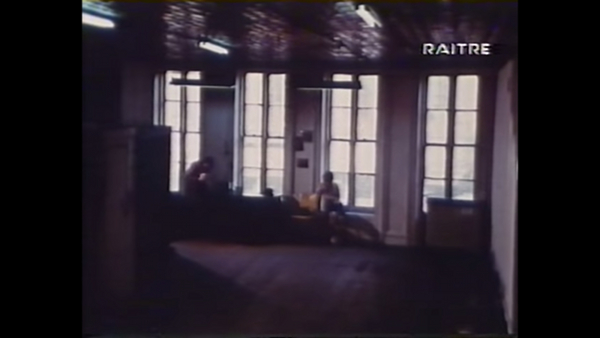
Wavelength (1967)
This is one of the slowest films. It’s about a closed-circuit camera being hypnotized by a troublesome photograph taped to a wall.
[Available on YouTube.]
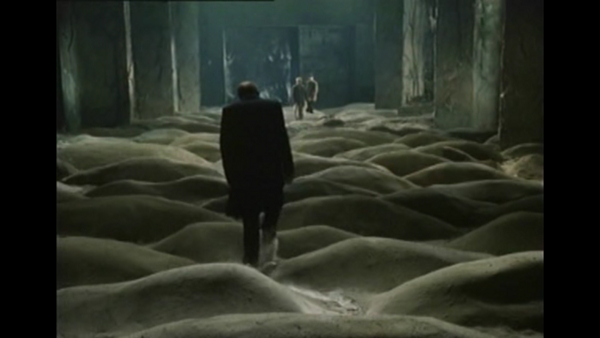
Stalker (1979) /
Nostalghia (1983) /
The Sacrifice (1986)
Stalker is sort of a slow, hypnagogic crawl through an uncertain landscape. Three hikers bicker and lob philosophical accusations at each other while half asleep on rocks and moss and water. We witness this, and we are hypnotized into mind-wandering exercises of our own.
Nostalghia and The Sacrifice are also worth watching to get a more complete picture of his style and motifs. His films can be solemn, and drowsy at times, and honestly his preoccupations with asceticism and sacrifice don’t do it for me, but he also cared a lot about human fragility and that’s worthwhile.
KRZ owes a lot to the pacing, visual form and choreography of Tarkovsky’s films. He talked about filmmaking in terms of rhythm, and as a process of ‘sculpting in time,’ and he cared about the visual impression on the viewer more than editing a story (he likened using plot devices as having the audience solve a dreary algebra theorem.) I also see a lot of theatre in his films, but he would’ve whole-heartedly disagreed about that.
[Stalker available on DVD. Nostalghia available on DVD, Blu-ray, Netflix Instant & iTunes. The Sacrifice available on DVD & Blu-ray.]
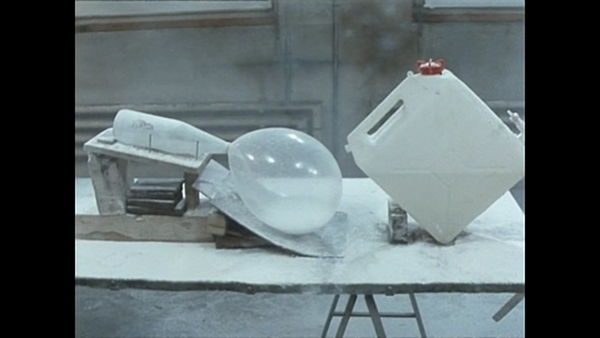
The Way Things Go (1988)
A couple of artists decided to make a film of a Rube Goldberg machine. I used it in the talk as a joke of what obsessive attention to plot might look like to a filmmaker like Tarkovsky. But really, it’s a mesmerizing film, you should watch it!
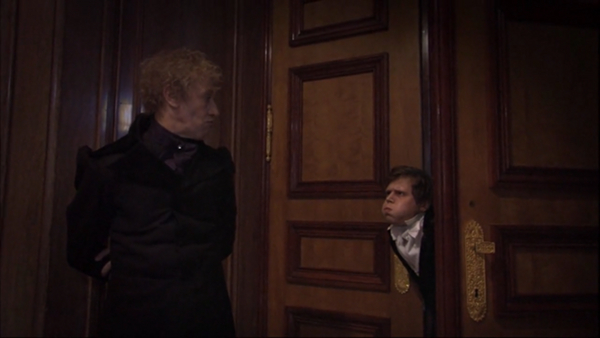
Russian Ark (2002)
Sokurov is kind of a student of Tarkovsky and I think that is readily seen in Russian Ark. I’ve only read a handful of Russian novels and so the cultural and historical references leave me estranged, but that’s a feeling that totally works for me here.
You follow Marquis de Custine through an anachronistic afterlife housed in the Winter Palace while he makes snide remarks about Russian culture.
At times he’s right next to you and other times he wanders off and leaves you stranded. Formally, the film is done as one incredible long take, which speaks to the pacing and continuity of real-time experience which I think is important in KRZ as a piece of theatre. I think it’s something that could be looked at more closely in first-person games, too.
[Available on Netflix Instant, DVD and Blu-ray.]
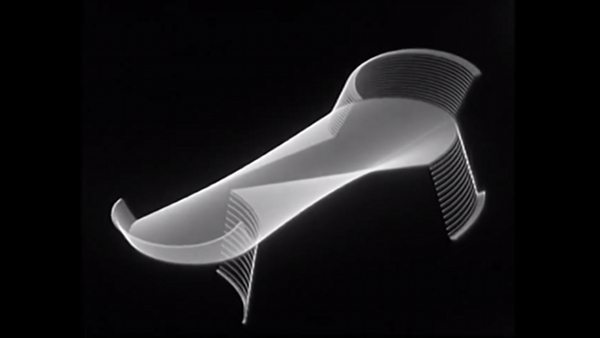
Scan Processor Studies (1973)
These are experiments with deflecting cathode rays to make strange landscapes. They share a family resemblance to the Zero, and they are partly responsible for the tone of it and other map modes in KRZ.
[Available on YouTube.]
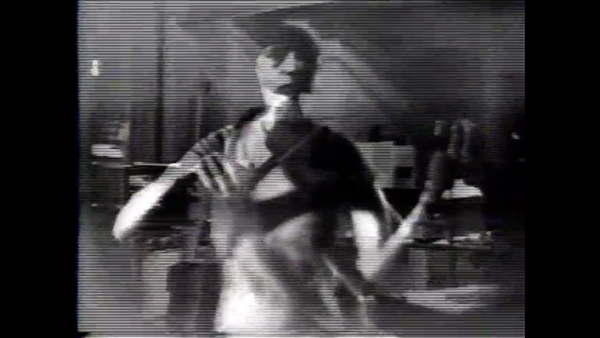
Violin Power (1978) /
Flux (1977) /
Floor to Walls to Ceiling (197X)
Here’s a short video tour around some of Steina Vasulka’s (early) video work. I also like the way she talks about ‘machine vision’ and the way she distances the camera lens from the human body and experiments with other points-of-view. The Scan Processor Studies are pretty cool, but I love the way she literally fiddles with the video image through her violin.
[Available on Vimeo.]
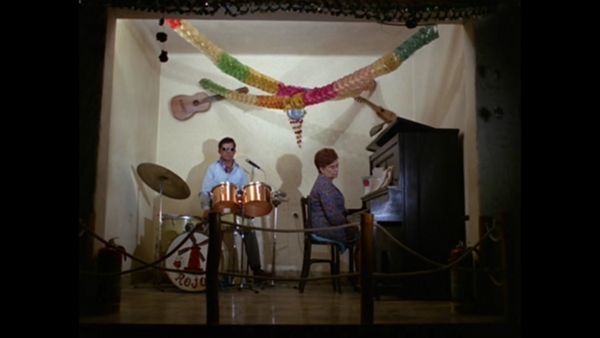
Fata Morgana (1971) /
Lessons of Darkness (1992) /
The Wild Blue Yonder (2005)
I think this trilogy is an overlooked but important contribution to the sci-fi opera genre. They’re also films where the space between fiction and documentary becomes an aspect of filmmaking. Maybe they’re also experiments in cinematic defamiliarization.
What I really like about these films is they (like Tarkovksy’s) give us mostly unguided or loosely narrated images that, instead of appealing to our practical desire for plot, provoke our more poetic side.
The Wild Blue Yonder in particular was on our mind while working on KRZ. The connection is maybe indirect, and the tone of the film is very different than our game, but I think it’s worthwhile pointing out how there is a multi-dimensional narrative at play. Personally, alongside an unreliable ‘alien’ narrator, I saw a tragic revelation about microgravity and the human body, and maybe an elusive mythology about transmigration. Hard to say for sure, though. More concretely, it features one of NASA’s leading poets, who dwells on chaos and migration.
[Fata Morgana available on DVD. Lessons of Darkness available on DVD. The Wild Blue Yonder available on DVD.]
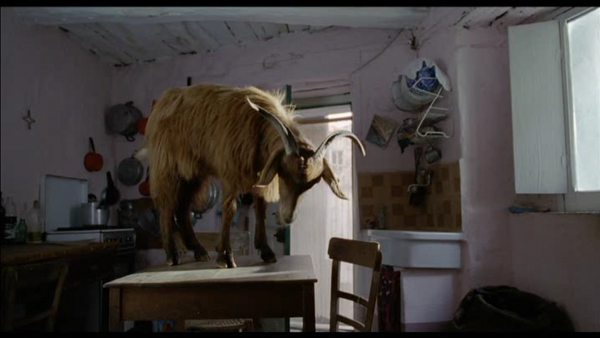
Le Quattro Volte (2010)
If you want to watch a slow and quiet film about Pythagorean metempsychosis, portrayed as the death of a shepherd, the birth of a goat, the hoisting of a tree, and the burning of that tree, I think this is that film.
[Available on DVD and Blu-ray.]
See more posts about: Cardboard Computer, Kentucky Route Zero, Tamas Kemenczy, Venus Patrol Presents





